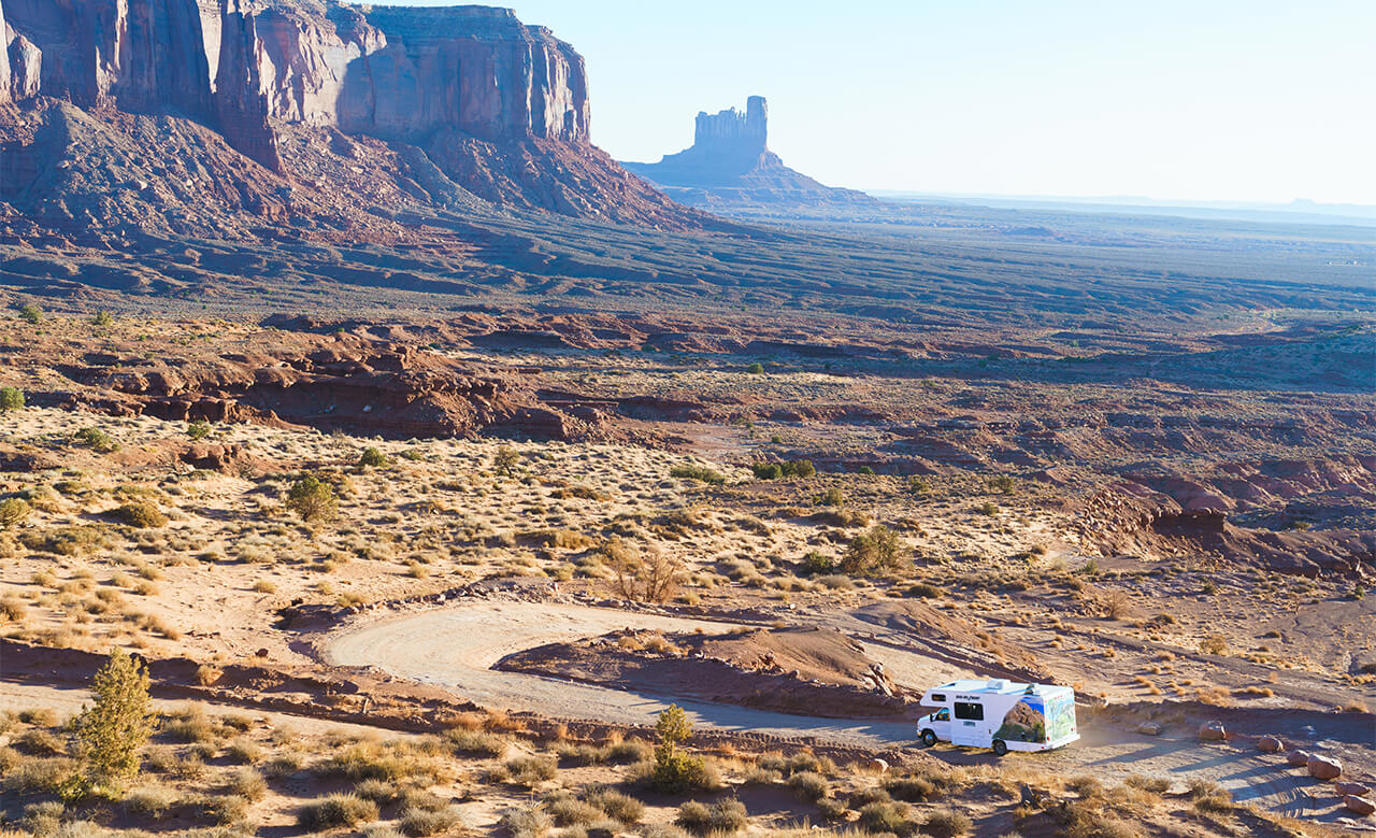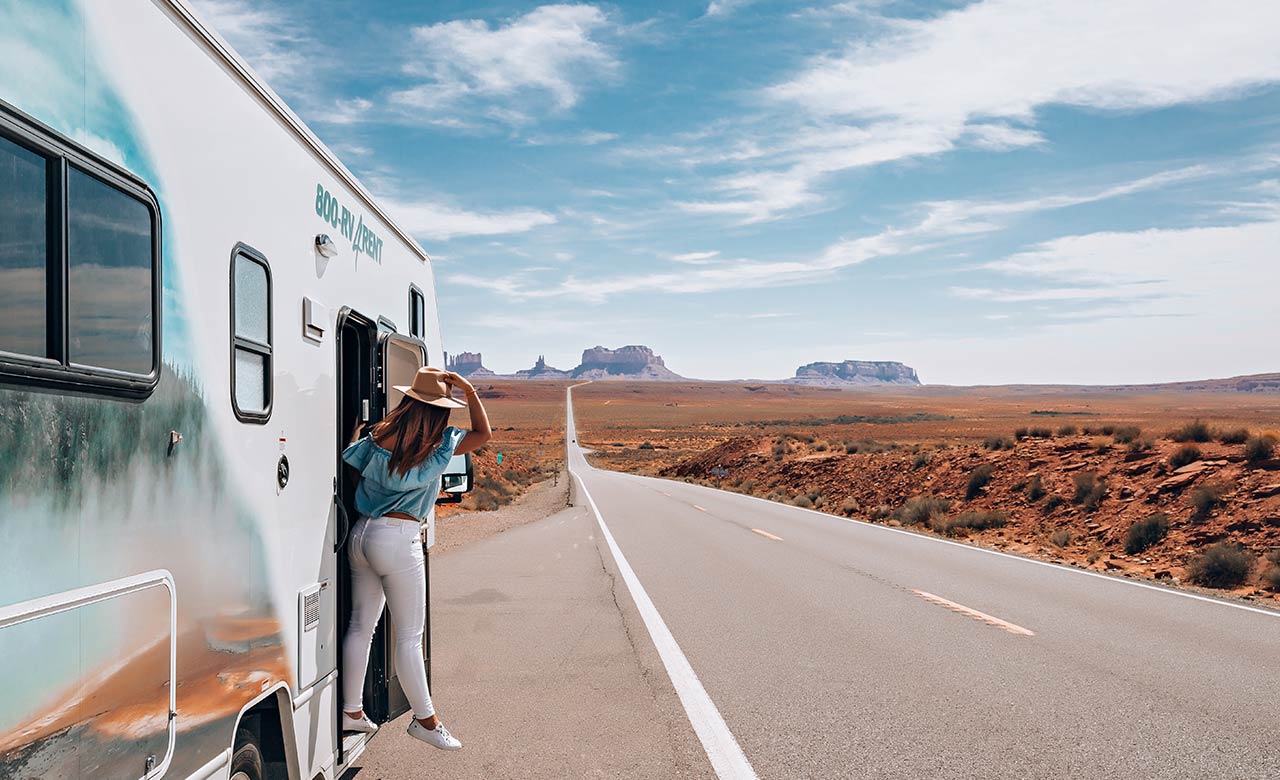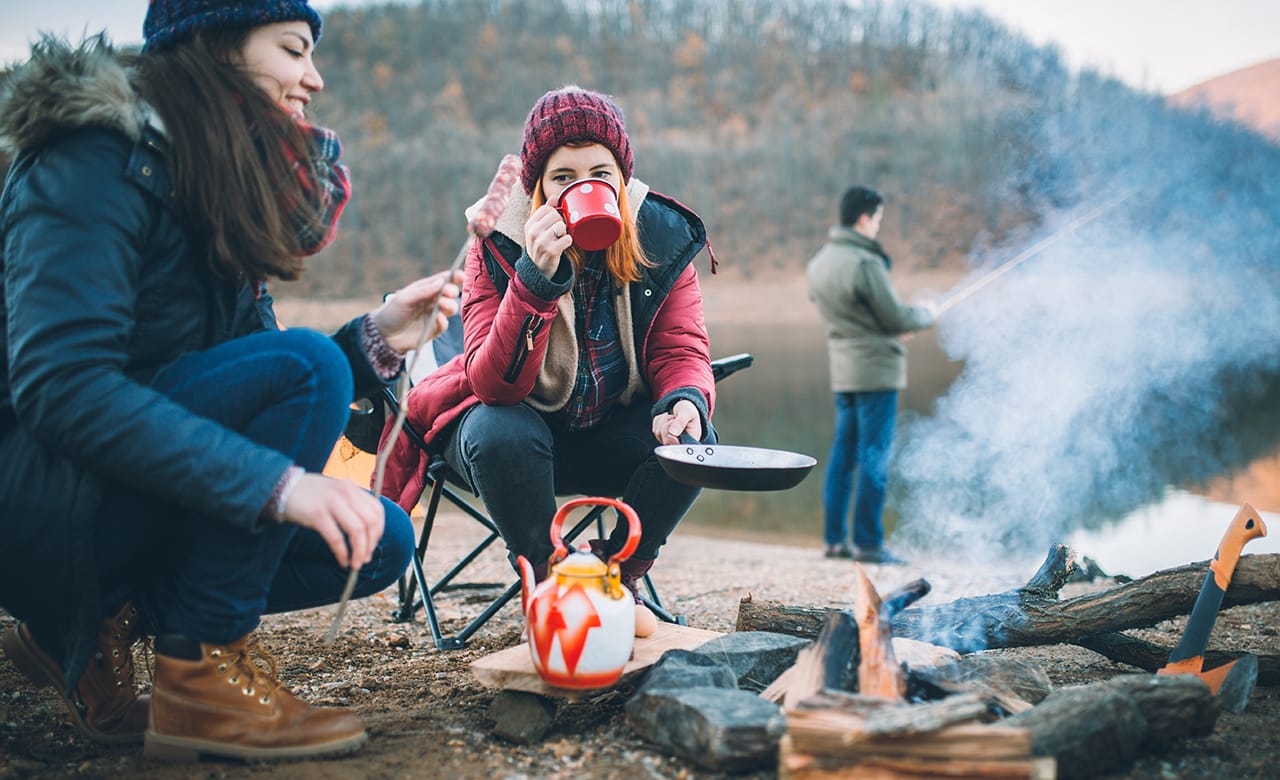
When it comes to planning an RV camping trip to national parks, you may be thinking, “Isn’t it the same as planning any other RV camping trip?” Well, yes and no. Camping in national parks requires you to consider certain logistics you may not have to prep for at other campsites. Here are a few things you should know before taking your RV rental on a trip to one of the country’s most popular camping destinations.
Timing
The National Park Service recently reported more than 300 million visitors to its national parks in 2018 and nearly 14 million overnight stays. That’s a lot of camping.
Finding the best time to plan your visit can be frustrating. The summer months are often booked solid with vacationers. Spring and fall bring busy weekends, requiring campers to book their stays far in advance. So, what do you do? Get a jump on planning your trip early, as some sites require you to book six months in advance to guarantee a spot. For a last-minute vacation, we recommend booking weekday travel dates, as there is often higher availability and it can you avoid the crowds.
Amenities
It’s important to consider how important everyday amenities are to you and your travel crew. Many national park campsites offer limited, and sometimes nonexistent, hookups. This is often referred to as dry camping. No water. No electric. Nada.
What does that mean for you? While Cruise America vehicles are self-contained, extended trips without these hookups require careful planning. On days with limited generator hours or ones without water hookups, plan on taking advantage of the great shower and bathroom options provided by most parks. While you’re there, you can charge your phones, enjoy the free A/C and take a little time to get your national park passport stamped at the gift shop.

Weather
On any camping trip, extreme weather conditions can have a significant impact on your trip. Hot summers or snowy winters can lead to uncomfortable temperatures. And with limited generator hours, you won’t have constant access to air conditioning or heat. If someone in your group requires mild temperatures, you’ll need to try to choose a more temperate season of the year.
Cell Service
If you’re in need of a digital detox, camping in national parks is a great way to do so. Natural land features like mountains, forests and canyons can severely limit your ability to get a signal. If staying connected is a must for you, you’ll want to check your service providers’ coverage map to ensure you’ll have access somewhere within park grounds.
Impact
It is important to remember the mission of the National Park Service when planning your next trip — to preserve and protect natural and cultural resources. As a camper, you should follow Leave No Trace principles whenever possible. Some tips include:
- Only build fires when absolutely necessary and make sure they remain within the provided grill whenever possible
- Utilize reusable materials instead of one-time use items (i.e., silverware versus plastic utensils, Tupperware versus plastic bags)
- Avoid wildlife and stay within designated trails and campsites
- If you brought it to the campsite, take it with you when you leave — this includes removing all waste and dumping it in designated areas
With just a little bit of planning, camping in national parks can be an epic adventure that you will remember for a lifetime. Share your Cruise America RV adventure with us by tagging your posts on social with #BeThereNow.
